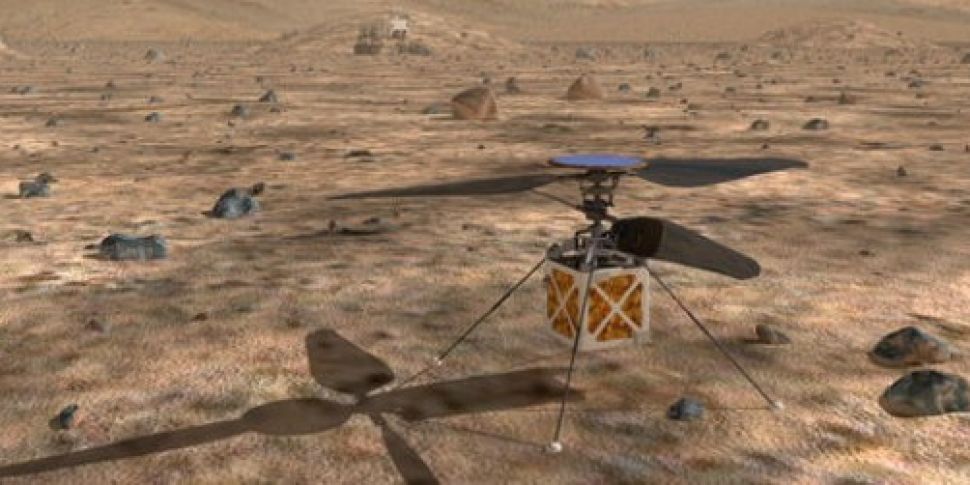NASA is sending a helicopter to Mars.
The Mars Helicopter - a small, autonomous rotorcraft - will travel with the Mars 2020 rover mission.
NASA says this is to demonstrate "the viability and potential" of heavier-than-air vehicles on the Red Planet.
NASA administrator Jim Bridenstine said: "NASA has a proud history of firsts.
"The idea of a helicopter flying the skies of another planet is thrilling.
"The Mars Helicopter holds much promise for our future science, discovery, and exploration missions to Mars."
The idea was started in August 2013 as a technology development project.
This NASA simulation shows the Mars helicopter flying away from Mars 2020 rover | Image: YouTube/NASA Jet Propulsion Laboratory
The craft weighs in at little under 1.8 kilograms, and its fuselage is about the size of a softball.
NASA says its twin, counter-rotating blades "will bite into the thin Martian atmosphere at almost 3,000 rpm - about 10 times the rate of a helicopter on Earth."
The helicopter also contains built-in capabilities needed for operation on Mars, including solar cells to charge its lithium-ion batteries, and a heating mechanism to keep it warm.
The altitude record for a helicopter flying on Earth is about 40,000 feet.
The atmosphere of Mars is only 1% that of Earth, so when the helicopter is on the Martian surface it is already at the Earth equivalent of 100,000 feet up.
The helicopter will be brought to Mars attached to the belly pan of the Mars 2020 rover.
NASA testing the Mars Helicopter | Image: YouTube/NASA Jet Propulsion Laboratory
Once the rover is on the planet surface, a suitable location will be found to deploy the helicopter down from the vehicle and place it onto the ground.
The rover will then be driven away from the helicopter to a safe distance from which it will relay commands.
After its batteries are charged and tests are performed, controllers on Earth will command the helicopter to take its first autonomous flight.











